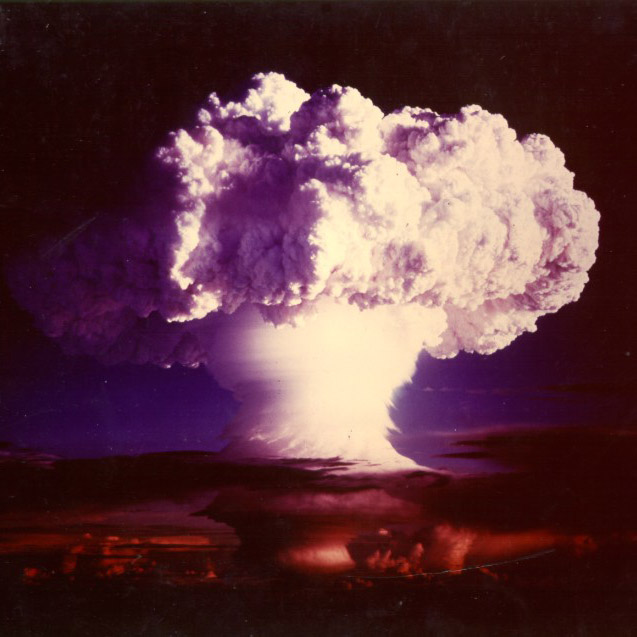Ajnštajnij
99
Es
Skupina
n/a
Perioda
7
Blok
f
Protoni
Elektroni
Neutroni
99
99
153
Opća svojstva
Atomski broj
99
Relativna atomska masa
[252]
Maseni broj
252
Kategorija
Aktinoidi
Boja
n/a
Radioaktivan
Da
Imenovan po Albertu Einsteinu
Kristalna struktura
n/a
Povijest
Einsteinium was discovered as a component of the debris of the first hydrogen bomb explosion in 1952.
It was identified by Albert Ghiorso and co-workers at the University of California, Berkeley in collaboration with the Argonne and Los Alamos National Laboratories, in the fallout from the Ivy Mike nuclear test.
The new element was produced by the nuclear explosion in miniscule amounts by the addition of 15 neutrons to uranium-238.
It was identified by Albert Ghiorso and co-workers at the University of California, Berkeley in collaboration with the Argonne and Los Alamos National Laboratories, in the fallout from the Ivy Mike nuclear test.
The new element was produced by the nuclear explosion in miniscule amounts by the addition of 15 neutrons to uranium-238.
Elektrona po ljusci
2, 8, 18, 32, 29, 8, 2
Elektronska konfiguracija
[Rn] 5f11 7s2
Einsteinij je prvi dvovalentni metal u seriji aktinida
Fizikalna svojstva
Agregacijsko stanje
Čvrsto
Gustoća
8,84 g/cm3
Talište
1133,15 K | 860 °C | 1580 °F
Vrelište
-
Toplina taljenja
n/a kJ/mol
Toplina isparavanja
n/a kJ/mol
Specifični toplinski kapacitet
- J/g·K
Zastupljenost u Zemljinoj kori
n/a
Zastupljenost u svemiru
n/a

Izvor slike: Wikimedia Commons (National Nuclear Security Administration)
Einsteinium was first observed in the fallout from the Ivy Mike nuclear test
CAS broj
7429-92-7
PubChem CID broj
n/a
Atomska svojstva
Atomski radijus
-
Kovalentni radijus
-
Elektronegativnost
1,3 (Paulingova ljestvica)
Potencijal ionizacije
6,42 eV
Atomski volumen
28,5 cm3/mol
Toplinska vodljivost
0,1 W/cm·K
Stanja oksidacije
2, 3
Primjene
Einsteinium is mainly used for scientific research purposes.
The rare isotope einsteinium-254 is favored for production of ultraheavy elements.
Einsteinium-254 was used as the calibration marker in the chemical analysis spectrometer of the Surveyor 5 lunar probe.
The rare isotope einsteinium-254 is favored for production of ultraheavy elements.
Einsteinium-254 was used as the calibration marker in the chemical analysis spectrometer of the Surveyor 5 lunar probe.
Einsteinium is harmful due to its radioactivity
Izotopi
Stabilni izotopi
-Nestabilni izotopi
240Es, 241Es, 242Es, 243Es, 244Es, 245Es, 246Es, 247Es, 248Es, 249Es, 250Es, 251Es, 252Es, 253Es, 254Es, 255Es, 256Es, 257Es, 258Es